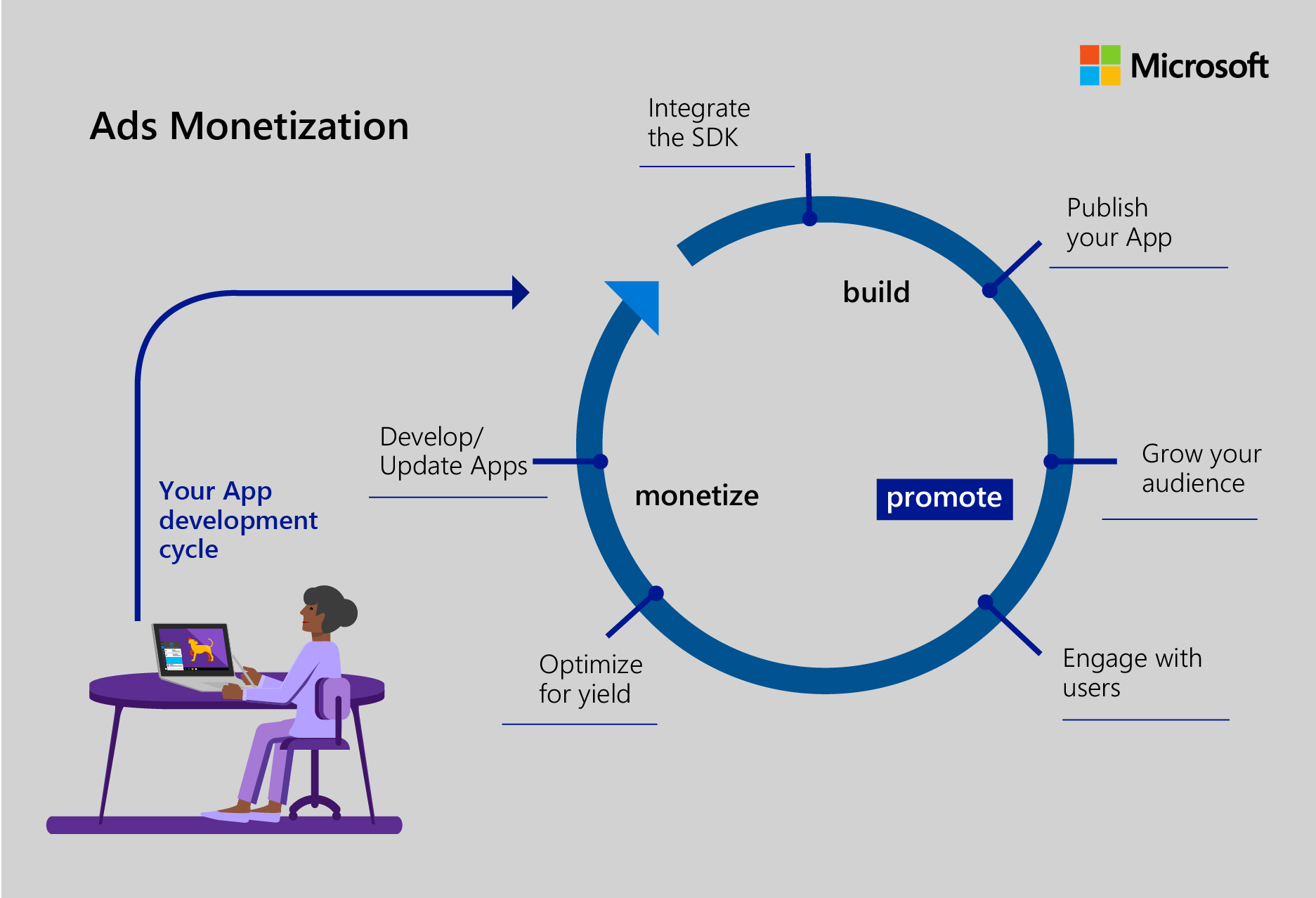Drive development success with the Ad Monetization Platform
Co-authored by Vikram Bodavula
You’ve worked on your app, published it and made it available for downloads. Now what?
While most developers dedicate a significant amount of time towards creating their app, they often neglect a crucial aspect - getting it into the hands of users and monetizing the engagement. Great user experience and excellent features are important, of course, but even the best apps need a smart user acquisition and monetization strategy.
That’s what developers and business partners Sam Kaufmann and Jake Poznanski discovered after a few years of independently developing games for the Windows platform. Sam and Jake started off in college and pooled money together from their credit cards to co-found Random Salad Games, an indie development studio, in 2011.
Over the years, Random Salad Games has developed and launched more than 50 titles. It was the first indie game to reach $1 million in revenues from the Windows Store. Random Salad Games has been leveraging Microsoft’s Ad Monetization Platform across the customer cycle - acquisition, monetization, and engagement.

Acquire
A common misconception most developers have is that users simply stumble on new apps on the Microsoft app store. This isn’t the case. Even the best apps need some form of promotion to create a user base.
Starting on a tight budget, Jake and Sam realized the best way to create a user base was to use the Promote Your App (PYA) framework on the platform. PYA is a self-service tool built into the platform that helps get apps out to more potential users. The PYA framework leverages machine learning algorithms to match your app with the right users. Creating a new campaign takes less than three clicks. New campaigns can be either paid or free. Free ad campaigns allow you to barter for exposure on the Microsoft Developer Community. Paid campaigns, meanwhile, can be launched for as little as $10, which is why upstarts like Random Salad Games could easily afford it.
Running an ad campaign is a balance between acquisition costs and estimated revenue per user. A great way to estimate your return-on-investment from each campaign is to estimate the lifetime value (LTV) of a new user and see if the cost per install (CPI) is less than that amount. For 90% of the ad campaigns on the Microsoft platform the CPI is less than $2.
By keeping costs low and using the PYA platform appropriately, Random Salad Games gradually built up a sizeable user base. The next step was to monetize the user base.
Monetize
The co-founders combined different combinations of ads to generate revenue. Ad banners, interstitial ads, and incentivised ads were integrated without compromising the experience of the app.
Effective monetization requires a long-term strategy that’s been built into the core of the platform. Within the Microsoft ecosystem there are multiple ways to monetize an app.

Advertising is the most prominent of these. The platform supports every type of ad, from playable video ads to native advertising. Most developers find that monetizing their app based on ads is the least time consuming and most straightforward way.
Sam discovered that Microsoft has one simple Software Development Kit (SDK) for these ads so that integrating them with an app is easy. For most apps, inserting a native, banner or interstitial ad requires adding in just a few lines of code. Here’s what it looks like:

A few simple lines and your chosen ad is quickly integrated with your app. Incentivised and interstitial ads can work very well and earn a lot in revenue. However, like banner ads they must be used sparingly to avoid diluting the user experience.
The platform also supports other forms of monetization including 3rd-party sponsorship and in app purchases.
Nevertheless, monetization is only part of the puzzle. A great monetization strategy and a strong user base may help generate revenue, but the key to success on any platform is engagement.
Engage
An engaged user base is easier to monetize. Driving engagement on your app completes the cycle to ensure a stable and recurring cash flow from your monetization strategy.
Monetizing a game without compromising on fun meant Random Salad Games had to get creative with ad placement.
The Microsoft platform offers a higher degree of control over the type of ads that show up on the app. Customizing these ads and making sure they don’t interfere with the user experience is as easy as drag-and-drop. Random Salad Games took advantage of this customizability to integrate a combination of interstitial and incentivised ads within their game.
Interstitial ads show up when there’s a natural pause in what the user is doing (like the loading screen on a mobile game). Incentivised ads are those that users willingly view to earn some reward. Random Salad Games incentivised users to watch ads so that they could earn more lives on their game ‘Jewel Star’. The co-founders claim this simple dialog box helped them double their revenues from the game:

Clever visual and interactive tricks like these can make your app more engaging and less frustrating for users. Users are more likely to come back to an app with conveniently placed ads that are actually fun to interact with.
Final Thoughts
Creating a great user experience on an app is only part of the puzzle. A solid user acquisition- monetization-engagement strategy will eventually lead to success on the Microsoft platform.
The Microsoft Ad Monetization Platform offers developers more control over the monetization strategy and handy support to drive engagement to acquire and sustain new customers.